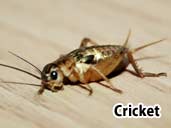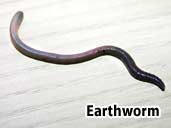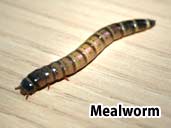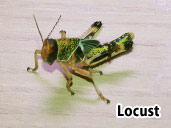Chinese Water Dragon Care Sheet written by Lee Banfield for TheReptilian.co.ukCommon name: Chinese Water Dragon Scientific name: Physignathus cocincinus DescriptionDescription: The Chinese water dragon is a very attractive medium sized lizard which is part of the Agamid family or commonly known as dragons and can resemble the green iguana, though on a smaller scale and generally less aggressive. Colouring can vary from a darkish brown/green to a pale green with the underside being lighter in colour from a pale green to white. You will also find that there are light coloured stripes running vertically along their bodies. You will find Chinese Water Dragon’s with a variety of coloured throats including pink, orange, peach and yellow. The tail of a Chinese Water Dragon has brown and green bands and ends in a fine point unless it has lost its tail at some point. They use their tails to balance and use it as leverage for climbing, it can also be used for defense as a whip if it feels it is under attack or being threatened. These semi arboreal lizards are very agile and fast climbers with well developed legs and 5 toed claws front and back, you will find the front legs are thinner than the rear and are used for climbing and grasping. The rear legs are more powerful for swimming, jumping etc. Size: Hatchlings are around 1 inch snout to vent with an overall length of around 15cm. Adult males can grow to around 3 feet while females are smaller measuring around 2 feet. Life span: Around 10 years and some recorded up to 15. Origin: Mainland south East Asia Habitat: In the wild Chinese Water Dragon’s would be found in trees and bushes where the humidity is high and also occasionally coming to ground, being diurnal they are active by day and sleep at night. Temperament: Chinese Water Dragon’s make great pets and if bought from a young age can be tamed very easily and become very friendly. Even though they do have teeth that could draw blood, it is very unlikely for one to bite and will try to escape first. Your Terrarium/vivarium should contain:One of the downfalls to owning a Chinese Water Dragon is the size of the enclosure it will need at adulthood, it will need to be at least twice the length of the Chinese Water Dragon with plenty of height so the minimum size for a adult male would be 6’ wide x 5’ high and 2’-3’ deep with branches for climbing and foliage for cover. Branches and FoliageBranches should be treated by soaking in a 5-10% bleach solution for at least 15 minutes and then thoroughly rinsed. When it comes to foliage you have the choice of real plants or plastic, there are several real plants that can be used either potted or planted in to the soil substrate. If you’re using real plants it is advisable to repot them and give it a week or two of rinsing to make sure there’re no pesticides etc left on them. The following groups are known to be safe to use:
SubstratesThere are several substrates available for use, you can use small grade orchid bark, sterile soil, cypress mulch or a combination of 1 part sand and 2 parts soil. If using soils it is very important to make sure there are no pesticides or fertilizers in it. Some keepers will use Astroturf, paper etc but I feel that the natural substrates are best and will help with the humidity. WaterYou should also include a area for it to swim/bath in as they do like to swim and will use the water to defecate in, this water should be changed on a daily basis Humidity
Plants and moist substrate will also help as will having a light/heat source above a water bowl causing the water to evaporate. Having an hygrometer within the enclosure will allow you to monitor the humidity more accurately. Both digital and dial hygrometers are readily available online and from reptile specialist shops. HeatYou should be aiming for daytime temperatures of 28.9°C - 31.1°C (84 and 88°F), with a night time temperatures of between 23.9°C - 26.7°C (75 and 80 °F). It is a good idea to have a digital thermometer at both the cool and warm end. Basking lights are appreciated by Chinese Water dragons, who like to bask under a hot heat source during the daytime. A suitable heat emitting bulb can be attached to the roof of the vivarium using a porcelain heat-resistant socket and is quite safe as long as a guard if fitted to ensure your dragon cannot come into contact with it. Some of these bulbs can provide both sufficient heat and light, so it is important to understand the capabilities of the bulb before using within the vivarium. Additional UVA/UVB lighting may not be required if the bulb you have chosen provides this full-spectrum light. All heat sources need to be controlled by a suitable thermostat and be protected by a guard. Heat bulbs usually work well on Dimmer stats, whilst Ceramic heaters require a Pulse Proportional stat. Some thermostats can be purchased that will automatically lower the temperature at night time, but these are usually a little more expensive to buy. On/off timers can also be purchased to control the hours of light, but this is a convenience device and not necessary for the safety of your Chinese Water dragon. LightingLighting is a very important factor in the health of your dragon as they require UVB to produce the vitamin D3 which is vital for the dragon to be able to absorb calcium into its system and without enough calcium it will develop metabolic bone disease (MBD). UVB is obtainable through UV lighting tubes or MVB’s (mercury vapour bulbs) which are an all in one bulb (heat, light and UVB). The lighting should be on for between 10-12 hours daily and is best set on a timer. General careFeeding
The diet of a water dragon consists mainly of insects like locusts, crickets, roaches, mealworms, earthworms, wax worms etc. Some keepers like to feed feeder fish but these can carry internal parasites, so it is not recommended. Once your Chinese Water Dragon is big enough you can also offer pinky and fuzzy mice. It’s best to dust your insects with a calcium/vitamin powder before feeding. Some dragons will eat fruit and veg but most don’t and the best way to get these into your dragon it to gut load your feeder insects. Fruit and veg you can try including green beans, kale, spinach, parsnips, figs, raspberries, cantaloupe, strawberries and blueberries, bananas etc, but try to stay away from citrus fruits. HandlingChinese Water Dragon’s can become very tolerant with being handled but this does not mean that they all enjoy it, their trust has to be gained and you should start off with them being comfortable with you entering their enclosure then work your way up with feeding them by hand and then maybe they will climb on to you, patience gets you a long way. SexingThis can be tricky as they all have female features until they mature. As they mature a male will develop larger, more triangular heads along with larger jowls and a much larger crest on the back of the head along with bigger spikes. The femoral pore of a male will appear smaller too. These characteristics start to change usually when it is around 20” long. BreedingProviding your dragons are in good health and well maintained they should breed easily. The idea minimum age for breeding is 2 years old and 2’ in length. Towards the end of autumn reduce the lighting by a few hours and drop the temps to 24-26°C (75-78°f) with a basking spot of 27-29°C (80-84°f), night time temps should be dropped to 20-23°C (68-74°f). Feeding should also be reduced to once a week and early in the day. After winter is over and the cooling period has ended you can return temps, lighting and feeding back to normal. After a week or so the male will show signs of wanting to mate, these include head bobbing, chasing the female and attempting to copulate and once successful copulation lasts 10-20 minutes. For best chances of success remove the female for a week then reintroduce again. After 2 months the female should be ready to lay her eggs in a clutch of between 5-15 eggs and can lay a second clutch 3-4 months later. You will need to prepare a substrate of moist sandy/soil at 8-10 inches deep for her to lay her eggs in. You will need to carefully remove these eggs and place them in a incubator at 29-31°C (84-88°f). Anymore questions about Chinese Water Dragons?This care sheet is a simple step-by-step guide to successful Chinese Water Dragon keeping, but if you have anymore questions or need more specific information about the keeping of Chinese Water Dragons, please enter our forum. It is a useful resource where you can ask members to share good practice and also talk about your experiences of being a Chinese Water Dragon keeper.
|
|

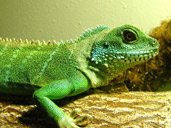
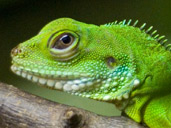
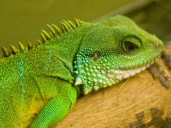
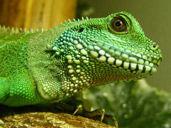
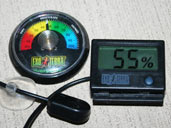 Chinese Water dragons do require high humidity at around 70-80%, this can be achieved by either manually spraying the enclosure 1-2 times a day or by using a misting system.
Chinese Water dragons do require high humidity at around 70-80%, this can be achieved by either manually spraying the enclosure 1-2 times a day or by using a misting system. 